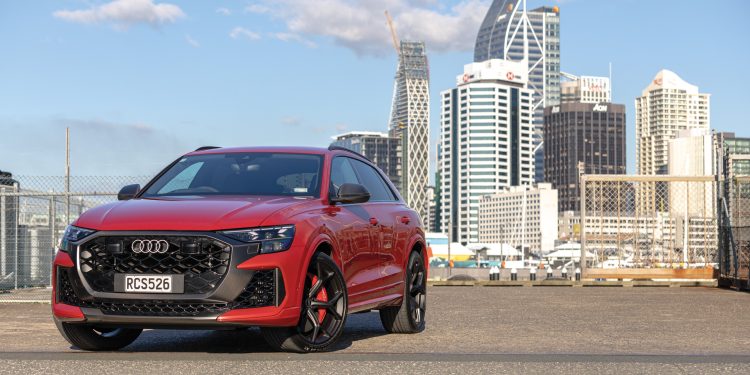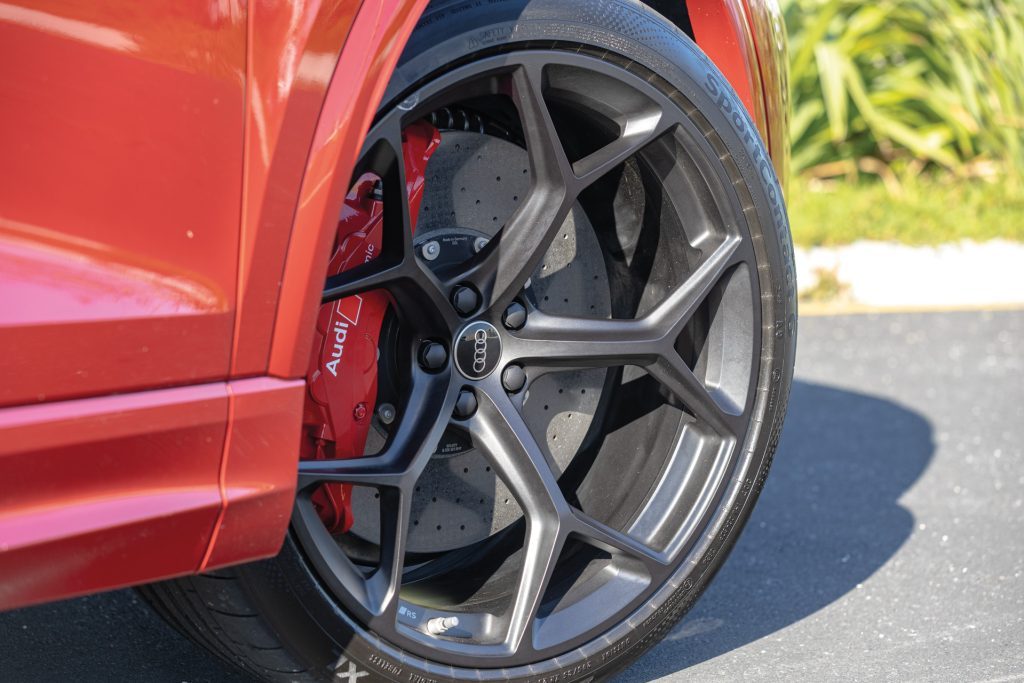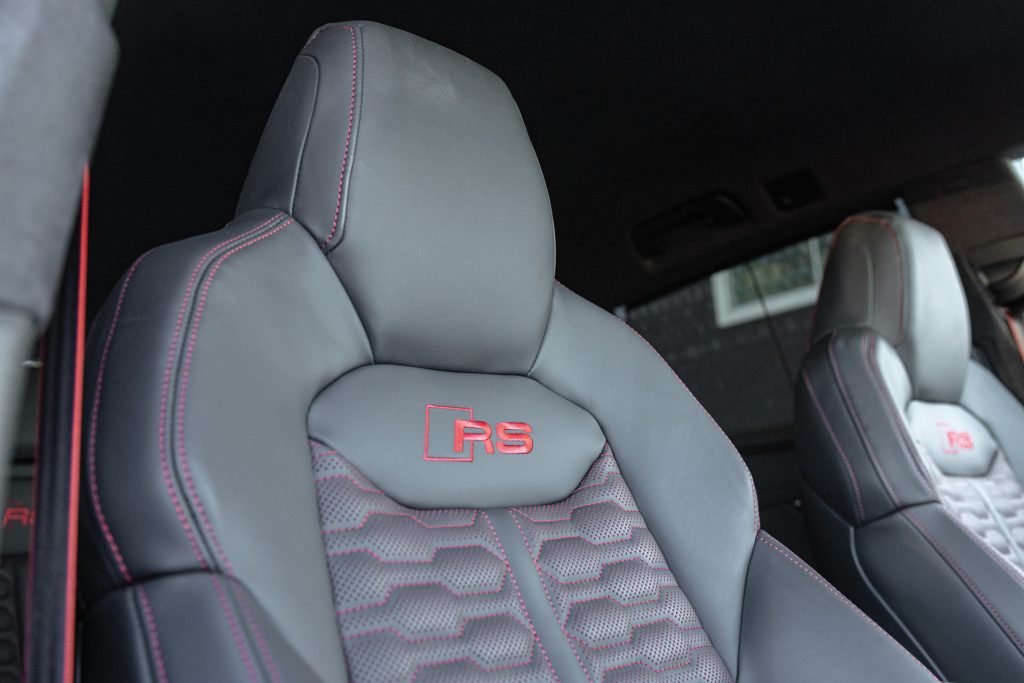2025 Audi RS Q8 Performance Review
Words: Peter Louisson | Photos: Alex Schultz
We’ve driven two large V8-powered SUVs over the past 10 days that are aimed at rather different buyers. The GMC Yukon Denali is all about pampering and practicality. Its big, boxy body allows it to seat eight people in comfort, there’s room for almost 3500L of luggage and it has a braked towing capacity of 3620kg.
Slightly smaller on key dimensions and with a more rounded coupe body style is the latest RS Q8 by Audi. It’s a five seater with about half as much luggage space, though towing capacity is almost as grand at 3500kg. While this features a smaller V8 (4.0L vs 6.2L) it conjures even more power than the GMC, thanks to its twin-turbo 48v mild hybrid set-up. Audi reckons it gets to 100 from standstill double quick where the Yukon is more about easy progress. Naturally, being slightly smaller the Audi isn’t as heavy but at nearly 2350kg, it’s no lightweight either. However, it is the most potent Audi ever, and is track ready. Those features help make it cost half as much again as the Yukon though.
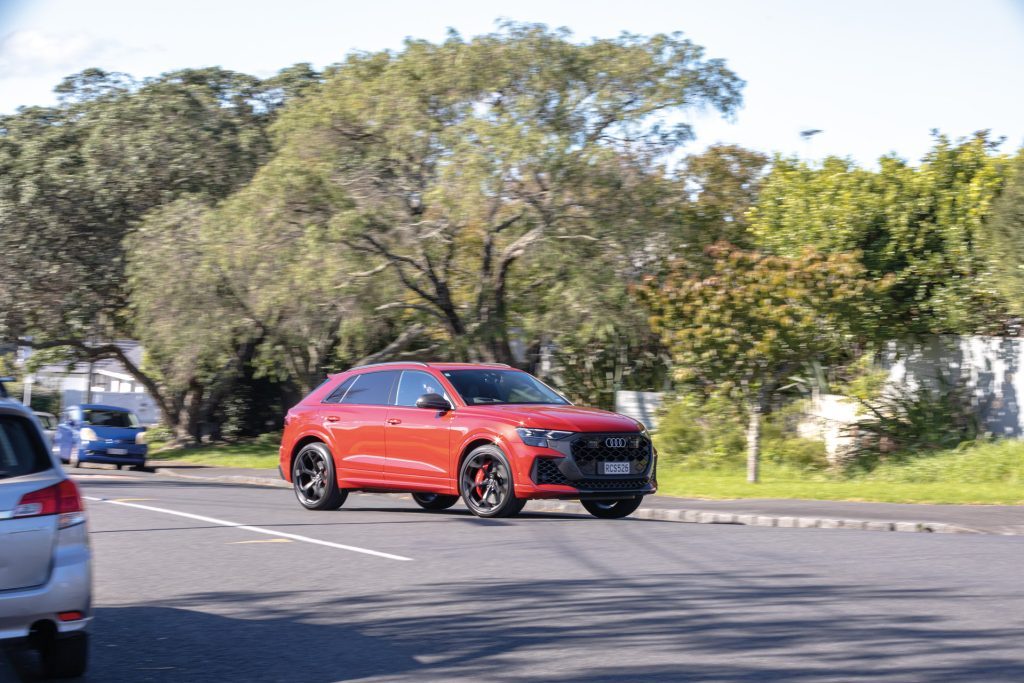
The Audi almost drives like a sports car, despite its elevated status. It’s certainly quick enough to be. This has even more ‘vorsprung durch technik’ than the former model we drove in 2020. And that was pretty interesting. This one is wilder yet, and not just in its performance claim which is enough to shade many actual performance cars. Thanks mainly to a new high flow exhaust system, power rises from 440 to 471kW while torque is up from 800 to 850Nm. It’s meant to finish the 100km/h quickstep in 3.6sec, which is better by 0.2sec than the previous edition. And of course it managed that, stopping the clock at 3.54sec on the second run. Launch control and a hot-shot eight-speed auto help to deliver. It’s faster than BMW’s more expensive XM Red Label to the speed limit (3.77sec).
But what impresses even more is how this large SUV dispenses with corners. There’s plenty of tech to assist with that, including quattro AWD with a self locking centre diff (40/60 front/rear split, up to 85 per cent rearward), a torque-apportioning sports diff, active roll stabilisation through the 48v system, rear-wheel steering, and adaptive air suspension.
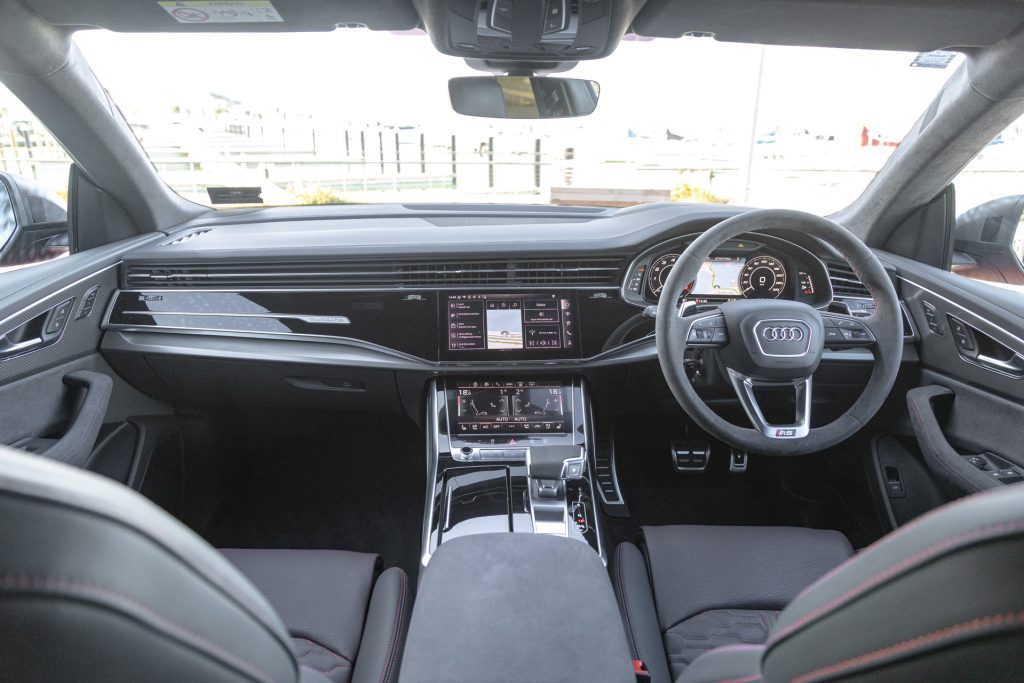
And don’t just take our word for it – the Performance version which is the one we get here ($284,990) is the current title holder of the fastest SUV around the Nurburgring. Previously that honour was held by the Cayenne Turbo GT Coupe. The RS Q8’s time of 7.36.7 eclipses that of the previous RS Q8 by six seconds. The new is as fast as what the RS 3 can manage around the Green Hell, or the M4 GTS. So it’s in good sport car company.
What else is different for the latest model? Aside from the mechanicals mentioned, the latest RS Q8 has a new grille and front bumper, updated headlights with various lighting signatures, and new wheels and taillights. The wheels, by the by, are lightweight items, saving 20kg of unsprung weight and likely helped with that special lap time. They’re finished off with ContiSportContact 295/35ZR23 tyres.
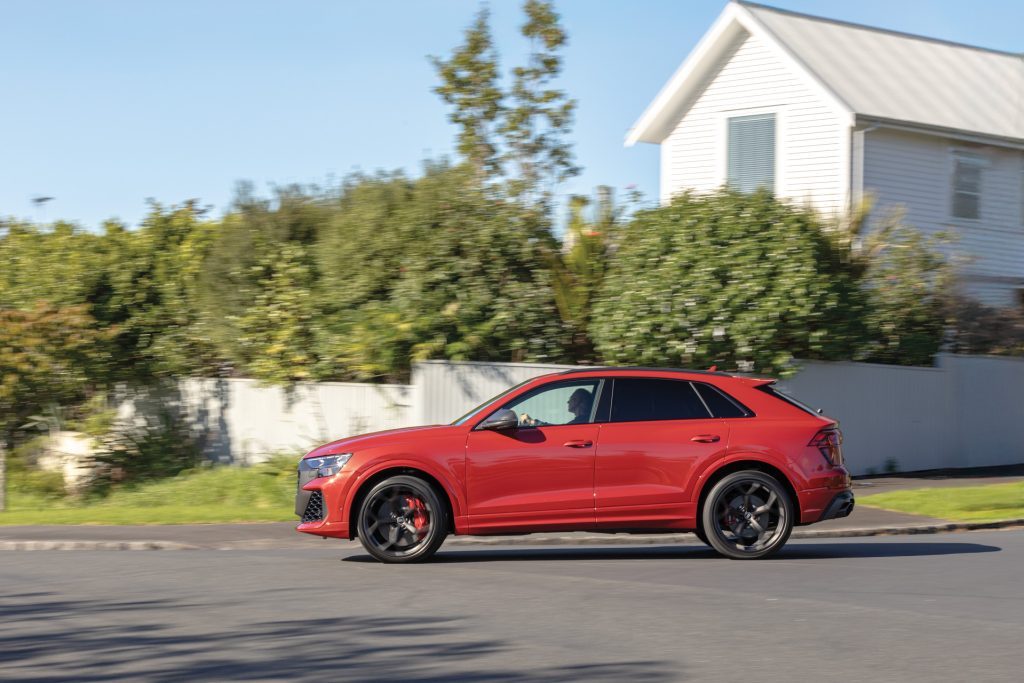
But that’s not the most impressive aspect of the wheel assemblies. Not that they don’t look awesome ‘cos they do. But peer inside and you’ll notice standard carbon ceramic brakes at all four corners. They’re enormous too – the dinner plate comparison is not even close – at 440mm up front and 370mm at the rear. Said to deliver ‘powerful and consistent braking’ that’s damning them with faint praise. These are amongst the best brakes I’ve encountered on an SUV and are about as good as it gets, period. The two crash stops from 100 we performed took 33.1m and 32.93m. Most supercars can’t better that, even if they have brakes made of similar stuff. And for a 2.5 tonne vehicle, those distances are epic.
But it’s how they feel at work that tops everything. The merest hint of pedal pressure has the RS slowing well, and when you bear down this gets the very best from those meaty tyres as they bite into the road surface. The brakes are so good you end up running into corners hot just to confirm once again how well they work. The feel at the pedal is reference level.
Not that the G forces in the opposite direction are exactly wanting. It manages an 80-120 overtake in 2.16sec. Best select S mode with a quick pull back on the shift lever for that. The only SUVs that are quicker (but not around the ‘Ring) are the Aston DBX707 and Lamborghini Urus, both which are well over $400k on road.
Just a couple of other things; this is essentially neutral in corners, thanks to all its special engineering features. And it is silly fast though them too, all without squealing. There’s a bit of road noise generated but it’s low 70s stuff and never annoying.
Of equal note is the amazing ride quality, especially in the Comfort setting. If you want more dynamics dial it up to Auto which firms things for the curves, eases back on the straights. But Comfort mode is a bit addictive.
The interior is roomy, for four at any rate. So too is the luggage bay. Seats look and feel sensational, those in the back on sliders. We especially liked the Alcantara-lined wheel, the rim not too thick. We weren’t so fussed on all the log-in digital BS at start up but you can drive the car without all that.
Yes, it’s a fair old whack more expensive than before (up by $45k). It’s also quite big around town while fuel use overall was 13.6L/100km. However, for an ultimate do-it-all family vehicle it almost seems like sane value.
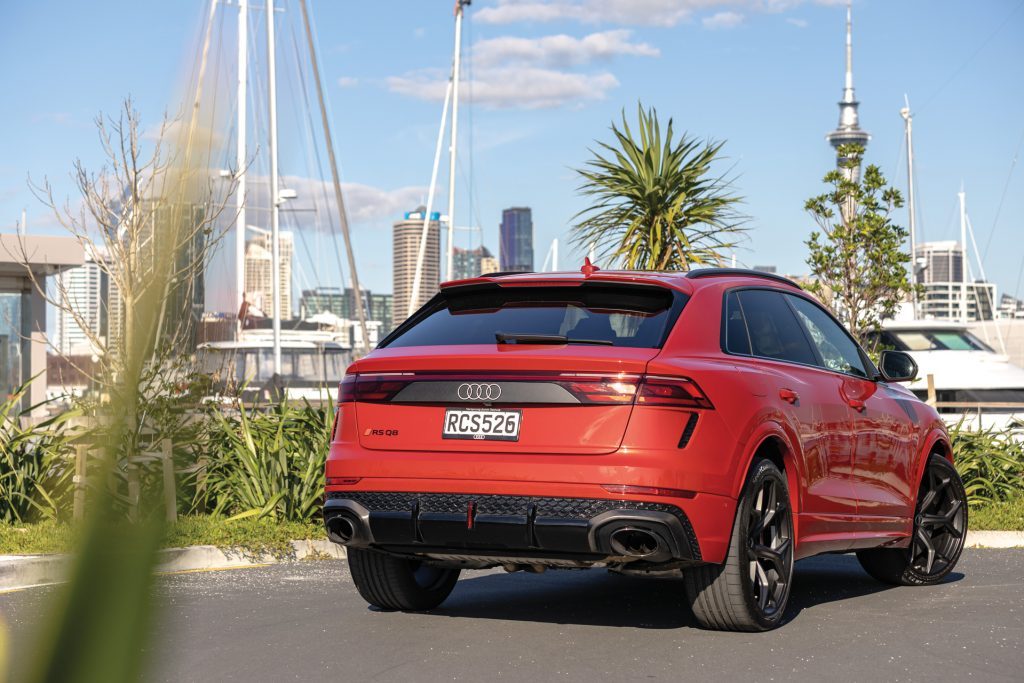
Audi RS Q8 Performance
$284,990 / 13.6L/100km / 309g/km
0-100 km/h 3.54s
Engine 3996cc / V8 / TT
Max power 471kW@6000rpm
Max torque 850Nm@2300-4500rpm
Drivetrain 8-speed-auto / AWD
Weight (claimed) 2350kg


